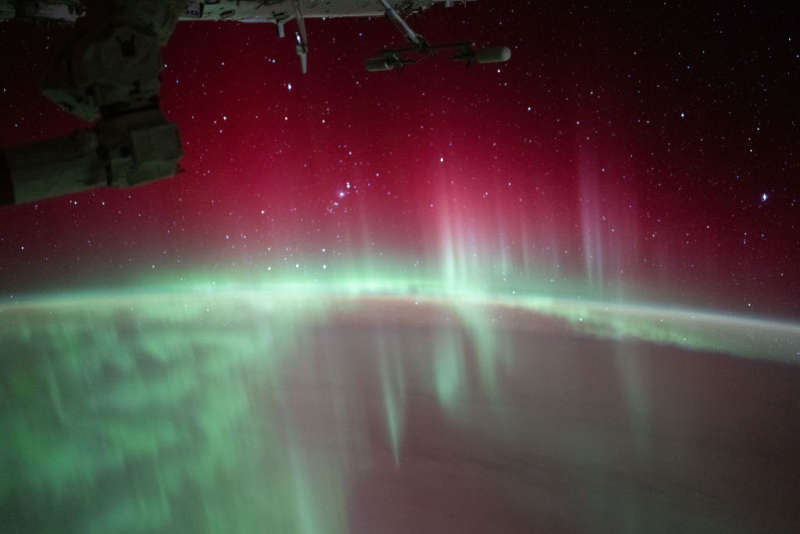Credit & Copyright: NASA,
ISS
Expedition 71
Explanation:
This snapshot
from the
International Space Station
was taken on August 11 while orbiting about 430 kilometers
above the Indian Ocean, Southern Hemisphere,
planet
Earth.
The spectacular view looks south and east,
down toward the planet's horizon and through red and green
curtains of
aurora australis.
The auroral glow is caused by emission from excited oxygen
atoms in the extremely rarefied
upper
atmosphere
still present at the level of the orbiting outpost.
Green emission from atomic oxygen dominates this scene
at altitudes of 100 to 250 kilometers, while red emission
from atomic oxygen can extend as high as 500 kilometers altitude.
Beyond the glow of these southern lights, this view
from low Earth orbit reveals the starry sky from a southern
hemisphere perspective.
Stars in Orion's belt and the Orion Nebula are near the Earth's limb
just left of center.
Sirius, alpha star of
Canis Major
and brightest star in planet Earth's
night is above center
along the right edge of the southern orbital skyscape.
Looking Up:
International
Observe the Moon Night
1999 2000 2001 2002 2003 2004 2005 2006 2007 2008 2009 2010 2011 2012 2013 2014 2015 2016 2017 2018 2019 2020 2021 2022 2023 2024 2025 |
Yanvar' Fevral' Mart Aprel' Mai Iyun' Iyul' Avgust Sentyabr' Oktyabr' Noyabr' Dekabr' |
NASA Web Site Statements, Warnings, and Disclaimers
NASA Official: Jay Norris. Specific rights apply.
A service of: LHEA at NASA / GSFC
& Michigan Tech. U.
|
Publikacii s klyuchevymi slovami:
aurora - polyarnoe siyanie
Publikacii so slovami: aurora - polyarnoe siyanie | |
Sm. takzhe:
Vse publikacii na tu zhe temu >> | |
